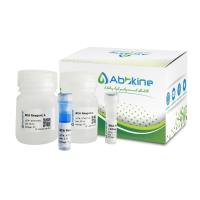小RNA与蛋白质的相互作用
互联网
(中国科学院上海生命科学研究院生物化学与细胞生物学研究所,分子生物学国家重点实验室,上海200031)
摘 要:小分子调控RNA,包括siRNA (small interfering RNA)、miRNA (microRNA)和piRNA (piwi interacting RNA)、hsRNA (heterochromatin associated small RNA)等,是当前生命科学研究的前沿热点。越来越多的证据表明,这些小分子RNA 存在于几乎所有较高等的真核生物细胞中,对生物体具有非常重要的调控功能。它们通过各种序列特异性的RNA 基因沉默作用,包括RNA 干扰 (RNAi)、翻译抑制、异染色质形成等,调控诸如生长发育、应激反应、沉默转座子等各种各样的细胞进程。随着对这些小分子调控RNA 的发现,一些RNase III 酶家族成员、Argonaute 蛋白质家族成员及RNA 结合蛋白质等先后被鉴定为小RNA 的胞内蛋白质合作者,参与小RNA 的加工成熟和在细胞内行使功能。本综述简介一些RNA 沉默作用途径中重要组分的结构和功能的研究进展。
关键词:小分子调控RNA;RNA 基因沉默;Drosha;Dicer;Argonaute;Piwi;小RNA 结合蛋白
中图分类号:Q522;Q51 文献标识码:A
生命科学 Chinese Bulletin of Life Sciences 第20 卷 第2 期 2008 年4 月
Small RNAs and proteins in RNA silencing pathways
LIU Mo-fanundefined, WANG En-duo
(State Key Laboratory of Molecular Biology, Institute of Biochemistry and Cell Biology, Shanghai Institutes for Biological Sciences, Chinese Academy of Sciences, Shanghai 200031, China)
Abstract: Small regulatory RNAs, including siRNA (short interfering RNA), miRNA (microRNA), piRNA (piwi interacting RNA), and hsRNA (heterochromatin associated small RNA), have been the hot frontier of life sciences in the past few years, and it is becoming more and more apparent that these small molecules have key regulatory functions. Small RNAs trigger various forms of sequence specific gene silencing, commonly referred to as RNA silencing, such as RNA interference (RNAi), translational repression, and heterochromatin formation in all higher eukaryotes and play important roles in cellular processes as diverse as development, stress response, or transposon silencing. Soon after the discovery of small regulatory RNAs, members of the RNase III family and Argonaute protein family, some RNA binding proteins, and etc., were identified as their major cellular protein interactors and involved in the biogenesis and various cellular functions of small RNAs. This review summaries the understanding of the structures and functions of the important components in small RNA-induced gene-silencing pathways.
Key words: small regulatory RNA; RNA gene silencing; Drosha; Dicer; Argonaute; Piwi; small RNA binding protein
在真核生物中,小分子非编码RNA 引发一系列序列特异性的基因表达负调控作用,包括RNA干扰(RNAi)、翻译抑制和异染色质形成等,这一现象被称为RNA 基因沉默作用[1-3]。RNA 沉默作用的发挥离不开参与小RNA生成和作用的一系列蛋白质因子。在过去的几年中,通过对这些小RNA 相互作用蛋白质的结构和功能的研究,对小RNA生成和作用的分子机制、生物学功能等方面的研究都取得了诸多突破性的进展。
1 siRNA/miRNA作用途径中的蛋白质因子
siRNA和miRNA是最早被发现和认识的小分子调控RNA。它们有许多共同之处,如:大小都约为22 nt;都经过RNase III 家族酶加工成熟;都是在转录后水平负调控基因表达;作用途径共享多种蛋白质因子。两者主要的区别在于起源上: miRNA 是内源性的,从编码miRNA 的基因转录长链初始miRNA (pri-miRNA),分别在核内和胞浆经两步加工形成;siRNA 则是从内源或外源的dsRNA 前体中生成,在胞浆内加工成熟,不需要Drosha 等细胞核内因子参与。此外,siRNA引发mRNA的降解,而动物miRNA 主要抑制mRNA 的翻译。
1.1 Drosha 及其辅助蛋白质 Drosha 负责pr imiRNA核内加工,属于RNase III 家族第II 亚家族中的一种酶,其特征是C- 端有2 个RIII 结构域和1个dsRNA 结合结构域(double strands RNA binding domain,dsRBD),N- 端带有一长肽段[4]。人Drosha含有1 374 个氨基酸残基,N- 端有2 个可能参与蛋白质- 蛋白质相互作用的结构域,分别是脯氨酸富集区和丝氨酸- 精氨酸富集结构域,后者在参与RNA代谢和剪接的蛋白质因子中普遍存在[5,6]。除了加工pri-miRNA 外,人Drosha 与E.coli RNase III相似,也参与加工高级结构化的rRNA 前体[5]。
在哺乳动物中仅有Drosha 不能将长pri-miRNA加工成70 nt 左右的前体miRNA (pre-miRNA)形式,还必需有dsRNA 结合蛋白DGCR8 参与才能进行该反应, DGCR8 在DiGeorge综合征(一种致命性先天病症,其特征是无胸腺、甲状旁腺功能减退和心脏缺陷)中缺失,其果蝇同源物被称为Pasha[7,8]。此外,还有多种RNA 结合蛋白,包括RNA 解旋酶、dsRNA 结合蛋白、Ewing 肉瘤家族蛋白及一些核蛋白等,可能参与调节pri-miRNA 的核内加工[7]。生成的pre-miRNA由核膜上的Exportin-5转运蛋白,转运到胞浆中,进一步被Dicer 酶加工[9]。Exportin-5同时还介导tRNA、腺病毒VA1 等非编码RNA的核输出[ 10 ]。
1.2 Dicer 及其辅助蛋白质 siRNA/miRNA 的成熟是RNase III家族第III亚家族酶――Dicer加工完成[11]。哺乳动物Dicer 是一个相对分子质量约200 000 的多结构域蛋白质[12,13],通常含有6 个结构域,它们是:1 个RNA 解旋酶―― DEXH 盒子、1 个含结合dsRNA 折叠的DUF283、1 个结合dsRNA 末端的PAZ、2 个RIII 和1 个dsRNA 结合结构域。
PAZ 结构域同时存在于构成RNA 沉默复合物的Argonaute (Ago)蛋白质家族中,事实上,PAZ 就取名于3 个主要的Ago 蛋白质,即Piwi、Ago 和Zwille[12]。贾第虫Dicer 仅有1 个PAZ、2 个RIII 结构域[13],比哺乳动物Dicer 要小得多,但在体外却有正常的裁剪活性。对贾第虫Dicer 晶体结构的研究揭示了 Dicer 制造确定长度小RNA的机制:Dicer 的晶体结构外形象短柄斧,2 个RIII 结构域构成刃部,PAZ 结构域构成柄端,之间通过长α 螺旋相连,相距约65%26Aring;,相当于25nt RNA 的长度[13]。
大多数脊椎动物、尾索动物和蠕虫类动物都只有1 个Dicer,而昆虫、真菌和植物往往有多个Dicer 同系物[14]。例如,果蝇中有2 个Dicer:Dcr-1 和 Dcr-2,分别负责miRNA 和siRNA 的生成[15]。除了加工生成小RNA外,Dicer 在RNA沉默复合物的装配中也发挥作用,双链siRNA 不能在去掉Dicer 的人细胞系中引发RNAi[16],证据表明,人Dicer 与已知的8 个人Ago 家族蛋白都有直接的相互作用[14]。
一些dsRNA 结合蛋白与Dicer 偶联,促进 miRNA 的加工或沉默复合物的装配。Loqs 是果蝇 Dcr-1 生成miRNA 的辅助蛋白质因子[17,18]。重组Dcr-1 能够独立将pre-miRNA 加工成miRNA,但Loqs 能大大提高Dcr -1 对dsRNA 的亲和力[17]。另一个 dsRNA 结合蛋白R2D2,与果蝇Dcr-2 相互作用,促进siRNA 装配到Ago2[19]。Dcr-2 与R2D2 组成的异源二聚体能够根据双链siRNA末端的热稳定性选择向导链[20]。TRBP 是Loqs 的人源同系物,它同时与Dicer 和Ago2 相互作用,不仅影响miRNA 的加工,而且与Dicer 一起构成沉默复合物的装配平台[21]。另一个人源Loqs-PACT,类似于TRBP,虽然不是pre-miRNA 加工必需的,但强烈地影响胞内成熟miRNA的积累和siRNA引发RNAi的效率[22,23]。
1.3 siRNA/miRNA 沉默复合物中的蛋白质因子 siRNA 和miRNA 都是通过RNA 诱导沉默复合物(RNA-induced silencing complex,RISC)负调控基因表达[24]。它们通过碱基配对,引导RISC 结合到靶mRNA 上,siRNA 指导RISC 执行定点裁剪,引发靶mRNA 的降解,而大多数动物miRNA 不直接导致靶mRNA 的剪切,主要是抑制翻译,或者介导mRNA 的衰变,如mRNA 3' 去腺苷化、5' 脱帽,间接影响mRNA 的稳定性[25]。
RISC 是一个由多种蛋白质组成的大分子复合物,其核心成分是Ago 家族蛋白质,最小的RISC 仅有Ago2 一个蛋白质成分[26]。Ago 蛋白质种类繁多,共同点是都有1 个PAZ 结构域、1 个具有潜在RNaseH 核酸内切酶活性的PIWI 结构域[24,27]。大多数真核生物都有多种Ago 家族成员,不同的Ago 通常具有不同的功能[2,24,27,28]。例如,果蝇有5 个不同的 Ago 家族成员:Ago1、Ago2、Aub、Piwi 和Ago3; Ago1 与miRNA 偶联,而Ago2 与siRNA偶联,Ago1 和Ago2 组成Ago 亚家族 [29,30]; Aub、Piwi 和Ago3 属于Ago 家族的PIWI 亚家族,与piRNA 偶联。
RISC 还含有其他一些蛋白质组分,包括Vasa 内含子基因蛋白质(VIG)、脆弱X 蛋白的果蝇同源物(DmFXR)、Tudor-SN、潜在的RNA 解旋酶 Dmp68 及Gemin3 等[31]。这些蛋白质成分不是RISC 核酸酶活性必需的,可能具有其他作用,如RISC 周转、RISC 亚细胞定位等,它们在RNAi 机器中的准确功能还有待于进一步的研究。此外,Ago 的两个辅助蛋白:MOV10 和含有RNA识别模块RRM 的蛋白TNRC6B/KIAA1093,它们与Ago 蛋白共定位于参与mRNA降解的胞浆P小体,介导miRNA诱导的mRNA 衰变[31]。
2 piRNA作用途径中的蛋白质因子
最近在生殖系细胞中发现了一类新的小RNA,因它们特异性地与Ago家族的PIWI亚家族蛋白质相互作用,被命名为piwi-RNA,简称piRNA[32-36]。
piRNA与siRNA/miRNA有许多不同之处:
(1) piRNA 与PIWI 亚家族蛋白质相互作用,而siRNA/miRNA 与Ago亚家族蛋白质相互作用;
(2) siRNA/miRNA的生物合成必需RNase III 家族酶,而piRNA 的生物合成可能需要PIWI亚家族蛋白质[37-39];
(3) piRNA长度为24 - 31nt,稍长于22 nt 的miRNA/siRNA;
(4) piRNA 有超过50 000 种,而miRNA 只有数百种;
(5) 大多数piRNA序列起源于基因组上20-90 kb长度的DNA链,每条DNA链可能代表一个长的piRNA 前体,常见DNA 双链被双向不重叠的转录,生成 2 个piRNA长链前体,而siRNA和miRNA分别从双链和短发夹结构RNA前体衍生[40-44]; (6) 除了基因沉默的负调控效应外,部分piRNA可能还有正调控效应,如增加mRNA 的稳定性和翻译[42]。
2.1 PIWI亚家族蛋白质与piRNA的生成 piRNA是怎样生成的?证据表明,piRNA 的生成与Dicer 无关[34]。它们可能是由某种核酸内切酶从长的单链RNA前体加工生成。推测果蝇的Piwi、Aub 和Ago3可能就是这样的核酸内切酶,因为它们具有剪切RNA 的活性[37-39]。
从转座子衍生的piRNA 可能通过一种“乒乓”机制生成[38,39]。比较果蝇的Ago3-piRNA、AubpiRNA和Piwi-piRNA序列发现:Aub-piRNA和PiwipiRNA主要来自转座子DNA反义链,而Ago3-piRNA 主要来自正义链;许多Ago3-piRNA 5' 端的10 nt 序列与Aub- 或Piwi-piRNA的5' 端10 nt 序列正好互补配对,Aub-piRNA和Piwi-piRNA的5'末端碱基偏爱 U,而Ago3-piRNA 的第10 位碱基偏爱A。
由此推测,P IWI 亚家族蛋白质可能也有类似Ago2 的 RNaseH 活性,受向导piRNA 的指导,在对应于 piRNA 5' 的第10 和11 位核苷酸剪切靶RNA链,产生一个新piRNA的5' 端序列,也就是,Ago3-piRNA 复合物切割靶RNA产生Aub-piRNA和Piwi-piRNA的 5' 端,而Aub-piRNA 或Piwi-piRNA 复合物切割靶 RNA 产生Ago3-piRNA 的5' 端。这个过程不仅连续制造新的piRNA,还不断破坏从自在基因转录的靶 RNA。哺乳动物和鱼的piRNA可能也通过类似的机制生成[41,43].
此外,不同于动物的miRNA和siRNA,piRNA 的3' 末端抗NaIO4/β- 消除处理,表明其核糖2'- 羟基被甲基化修饰[32,38,43-45]。最近,从果蝇中鉴定了一个负责piRNA 3' 末端甲基化修饰的甲基化酶―― Pimet,与从拟南芥获得的植物miRNA 3' 末端甲基化酶HEN1 同源[46]。目前还不清楚这种修饰的意义,推测可能对piRNA 的稳定性及功能至关重要。
2.2 piRNA的生物学功能 piRNA的生物学功能是什么?目前对这个问题还知之甚少,但它们的表达特异性、基因组分布特性为预测其生物学功能提供了重要线索。piRNA 在生殖系细胞中特异表达,大部分piRNA 序列分布于基因组的特定位点,如 17%-20%的哺乳动物piRNA起源于基因组的重复区,包括转座子和逆转座子,提示piRNA 可能通过沉默基因组内源的自在性遗传元件(selfish genetic elements),如逆转录病毒和重复性序列等,保证生殖系细胞基因组的稳定性,在配子形成(精子和卵子发生)过程中发挥作用[32-35,40]。事实上,已发现果蝇的一种转座因子――吉普赛因子(gypsy)piRNA 下调吉普赛因子内源逆转录病毒的正义链转录本,专一性地在生殖系细胞中防止自在性DNA 的有害表达[ 47 ] 。
piRNA偶联蛋白质的已知功能也是预测其功能的重要线索。Piwi 和Aub 是表观遗传学调控因子,参与异染色质形成[48];Piwi 与PcG (Polycomb group) 蛋白质共结合于基因组PcG 应答元件上,调控PcG 靶染色质的核内组织,协助PcG沉默同源异型基因[49]。在果蝇雄性生殖细胞系中,Piwi 防止逆转座子转位[50]。而Piwi 的鼠同源物Miwi,可增加靶mRNA 的稳定性,可能对翻译有促进作用[42]。协同于这些蛋白质的功能,piRNA 可能参与表观遗传学调控、基因转位抑制、转录后调控等。
总之,piRNA的发现揭示了生殖系细胞中一类新层面的基因表达调控,对其生成及作用机制、生物学功能的研究将加深我们对精子和卵子形成过程的了解。
3 小RNA与异染色质的形成
小RNA对着丝粒异染色质的形成和维持至关重要[51]。在裂殖酵母、植物和果蝇的细胞核内都发现了一种类似miRNA 的小分子RNA,它们与异染色质的形成密切相关,被命名为异染色质相关小RNA (heterochromatin associated small RNAs,hsRNA)[52]。它们通过RNA诱导基因转录起始沉默复合物(RNAinduced initiation of transcriptional gene silencing, RITS),参与组蛋白甲基化修饰,促成异染色质形成,在转录水平关闭基因表达。RITS 复合物由 Ago1、染色质结构域蛋白Chp1 及Tas3 等蛋白质组成,Tas3 结合活性基因ura4+ 转录的RNA,沉默 ura4+ 表达,起始异染色质形成 [52,53]。
在裂殖酵母中建立了RITS 作用模型[27,52-55]: hsRNA指导RITS复合物将依赖RNA的RNA聚合酶 ( R dRP) 招募到新转录的RNA 上,将其转化成 dsRNA。裂殖酵母的Dicer ―― Dcr1,与RdRP 复合物发生直接偶联,将新生成的dsRNA裁剪为与转录位点互补的小RNA[56]。这些新生成的小RNA 装配到RITS 中,引发新转录RNA 的降解,同时指导沉默因子Rik1招募组蛋白甲基转移酶Clr4到染色体的特定位点,接着Clr4 促使H3(histone-3)的K9 甲基化,这一修饰为克罗莫结构域蛋白质,如Swi6、 Chp1 和Chp2 (HP1 相关蛋白)等创造结合位点,招募更多其他蛋白质,从而启动异染色质形成,使基因沉默进一步扩大。
在异染色质重复区,位于启动子下游的基因被沉默的效率要高于位于上游的基因,说明转录促进沉默作用[54,55]。在裂殖酵母中,RNAi 通路为异染色质型沉默插入着丝粒重复区的转基因所必需。证据表明,在着丝粒重复区位点插入的转基因,从中转录生成的RNA可直接被RNAi 加工成siRNA,进而参与转基因的异染色质沉默[57]。
4 展望
具有调控功能的小RNA 通过转录后水平、转录水平、表观遗传学水平和异染色质形成等方式调控基因组的表达,参与多种细胞过程,对个体生长发育、繁殖和遗传起至关重要的作用。
通过对小RNA及其相互作用蛋白质的研究,使我们对这类新调控子的生成和作用机制、生物学功能等都有了一定的认识,但对一些新发现的小RNA,如piRNA,还需要进一步研究其生成及作用模式,如:哪些蛋白质参与piRNA 3' 端形成?新生成的piRNA是如何装载到PIWI蛋白中的?
此外,尚需鉴定包括miRNA 和piRNA 在内的大部分小RNA 的生物学功能。另外,调控小RNA 的表达表现出高度的时空性,对模式生物的一些特定发育、生理或病理状态的研究,是否还会发现新类型的小RNA?通过生化和分子生物学进一步研究将逐渐解决这些问题。
[参 考 文 献]
[1] Tomari Y, Zamore PD. Perspective: machines for RNAi.Genes Dev, 2005, 19(5): 517-29
[2] Peters L, Meister G. Argonaute proteins: mediators of RNA silencing. Mol Cell, 2007, 26(5): 611-23
[3] Kloosterman WP, Plasterk RH. The diverse functions of microRNAs in animal development and disease. Dev Cell,
2006, 11(4): 441-50
[4] Filippov V, Solovyev V, Filippova M, et al. A novel type of RNase III family proteins in eukaryotes. Gene, 2000, 245(1): 213-21
[5] Lee Y, Ahn C, Han JJ, et al. The nuclear RNase III Drosha initiates microRNA processing. Nature, 2003, 425(6956):415-19
[6] Blencowe BJ, Bowman JA, McCracken S, et al. SR-related proteins and the processing of messenger RNA precursors.Biochem Cell Biol, 1999, 77(4): 277-91
[7] Gregory RI, Yan K, Amuthan G, et al. The microprocessor complex mediates the genesis of microRNAs. Nature, 2004,432(7014): 235-40
[8] Yeom KH, Lee Y, Han JJ, et al. Characterization of DGCR8/Pasha, the essential cofactor for Drosha in primary miRNA processing. Nucleic Acids Res, 2006, 34(16): 4622-9
[9] Yi R, Qin Y, Macara IG, et al. Exportin-5 mediates the nuclear export of pre-microRNAs and short hairpin RNAs. Genes Dev, 2003, 17(24): 3011-6
[10] Calado A, Treichel N, Muller EC, et al. Exportin-5-mediated nuclear export of eukaryotic elongation factor 1A and tRNA.EMBO J, 2002, 21(22): 6216-24
[11] Ketting RF, Fischer SE, Bernstein E, et al. Dicer functions in RNA interference and in synthesis of small RNA involved in developmental timing in C. elegans. Genes Dev, 2001, 15(20): 2654-9
[12] Bernstein E, Caudy AA, Hammond SM. Role for a bidentate ribonuclease in the initiation step of RNA interference. Nature, 2001, 409(6818): 363-6
[13] Macrae IJ, Zhou K, Li F, et al. Structural basis for doublestranded RNA processing by Dicer. Science, 2006, 311
(5758): 195-8
[14] Sasaki T, Shimizu N. Evolutionary conservation of a unique amino acid sequence in human DICER protein essential for binding to Argonaute family proteins. Gene, 2007, 396(2):312-20
[15] Lee YS, Nakahara K, Pham JW, et al. Distinct roles for Drosophila Dicer-1 and Dicer-2 in the siRNA/miRNA silencing pathways. Cell, 2004, 117(1): 69-81
[16] Doi N, Zenno S, Ueda R, et al. Short-interfering-RNA-mediated gene silencing in mammalian cells requires dicer and eIF2C translation initiation factors. Curr Biol, 2003, 13(1):41-6
[17] Jiang F, Ye XC, Liu X, et al. Dicer-1 and R3D1-L catalyze microRNA maturation in Drosophila. Genes Dev, 2005, 19(14): 1674-9
[18] Forstemann K, Tomari Y, Du T, et al. Normal microRNA maturation and germ-line stem cell maintenance requires
Loquacious, a double-stranded RNA-binding domain protein. PLoS Biol, 2005, 3(7): e236
[19] Liu Q, Rand TA, Kalidas S, et al. R2D2, a bridge between
the initiation and effector steps of the Drosophila RNAi pathway. Science, 2003, 301(5641): 1921-5
[20] Tomari Y, Matranga C, Haley B, et al. A protein sensor for siRNA asymmetry. Science, 2004, 306(5700): 1377-80
[21] Chendrimada TP, Gregory RI, Kumaraswamy E, et al. TRBP recruits the Dicer complex to Ago2 for microRNA processing and gene silencing. Nature, 2005, 436(7051): 740-4
[22] Lee Y, Hur I, Park SY, et al. The role of PACT in the RNA silencing pathway. EMBO J, 2006, 25(3): 522-32
[23] Kok KH, Ng MH, Ching YP, et al. Human TRBP and PACT directly interact with each other and associate with dicer to facilitate the production of small interfering RNA. J Biol Chem, 2007, 282(24): 17649-57
[24] 刘默芳, 蒋 帅, 王恩多. RNAi 机器. 生物化学与生物物理进展, 2007, 34(10): 1012-7
[25] Valencia-Sanchez MA, Liu J, Hannon GJ, et al. Control of translation and mRNA degradation by miRNAs and siRNAs.Genes Dev, 2006, 20(5): 515-24
[26] Carmell MA, Xuan Z, Zhang MQ, et al. The Argonaute family: tentacles that reach into RNAi, developmental
control, stem cell maintenance, and tumorigenesis. Genes Dev, 2002, 16(21): 2733-42
[27] Tolia NH, Joshua-Tor L. Slicer and the Argonautes. Nat Chem Biol, 2007, 3(1): 36-43
[28] Okamura K, Ishizuka A, Siomi H, et al. Distinct roles for Argonaute proteins in small RNA-directed RNA cleavage pathways. Genes Dev, 2004, 18(14): 1655-66
[29] Parker JS, Barford D. Argonaute: A scaffold for the function of short regulatory RNAs. Trends Biochem Sci, 2006, 31(11): 622-30
[30] Williams RW, Rubin GM. ARGONAUTE1 is required for efficient RNA interference in Drosophila embryos. Proc Natl Acad Sci USA, 2002, 99(10): 6889-94
[31] Meister G, Landthaler M, Peters L, et al. Identification of novel argonaute -associated proteins. Curr Biol, 2005, 15(23): 2149-55
[32] Vagin VV, Sigova A, Li C, et al. A distinct small RNA pathway silences selfish genetic elements in the germline. Science,2006, 313(5785): 320-4
[33] Girard A, Sachidanandam R, Hannon G J, et al. A germlinespecific class of small RNAs binds mammalian Piwi proteins. Nature, 2006, 442(7099): 199-202
[34] Aravin A, Gaidatzis D, Pfeffer S, et al. A novel class of small RNAs bind to MILI protein in mouse testes. Nature, 2006,442(7099): 203-7
[35] Lau NC, Seto AG, Kim J, et al. Characterization of the piRNA complex from rat testes. Science, 2006, 313(5785): 363-7
[36] Lin H. piRNAs in the germ line. Science, 2007, 316(5823): 397
[37] Saito K, Nishida KM, Mori T, et al. Specific association of Piwi with rasiRNAs derived from retrotransposon and heterochromatic regions in the Drosophila genome. Genes Dev,2006, 20(16): 2214-22
[38] Gunawardane LS, Saito K, Nishida KM, et al. A slicer-mediated mechanism for repeat-associated siRNA 5' end formation in Drosophila. Science, 2007, 315(5818): 1587-90
[39] Brennecke J, Aravin AA, Stark A, et al. Discrete small RNAgenerating loci as master regulators of transposon activity in Drosophila. Cell, 2007, 128(6): 1089-103
[40] Kim VN. Small RNAs just got bigger: Piwi-interacting RNAs (piRNAs) in mammalian testes. Genes Dev, 2006, 20(15):1993-7
[41] Aravin AA, Sachidanandam R, Girard A, et al. Developmentally regulated piRNA clusters implicate MILI in transposon control. Science, 2007, 316(5825): 744-7
[42] Grivna ST, Pyhtila B, Lin H. MIWI associates with translational machinery and PIWI-interacting RNAs (piRNAs) in regulating spermatogenesis. Proc Natl Acad Sci USA, 2006,103(36): 13415-20
[43] Houwing S, Kamminga LM, Berezikov E, et al. A role for Piwi and piRNAs in germ cell maintenance and transposon silencing in Zebrafish. Cell, 2007, 129(1): 69-82
[44] Kirino Y, Mourelatos Z. Mouse Piwi-interacting RNAs are 2'-O-methylated at their 3' termini. Nat Struct Mol Biol, 2007, 14(4): 347-8
[45] Ohara T, Sakaguchi Y, Suzuki T, et al. The 3' termini of mouse Piwi-interacting RNAs are 2'-O-methylated. Nat Struct Mol Biol, 2007, 14(4): 349-50
[46] Saito K, Sakaguchi Y, Suzuki T, et al. Pimet, the Drosophila homolog of HEN1, mediates 2'-O-methylation of Piwi- interacting RNAs at their 3' ends. Genes Dev, 2007, 21(13):1603-8
[47] Pelisson A, Sarot E, Payen-Groschene G, et al. A novel repeat-associated small interfering RNA-mediated silencing pathway downregulates complementary sense gypsy transcripts in somatic cells of the Drosophila ovary. J Virol, 2007, 81(4): 1951-60
[48] Pal-Bhadra M, Leibovitch BA, Gandchi SG, et al. Heterochromatic silencing and HP1 localization in Drosophila are dependent on the RNAi machinery. Science, 2004, 303 (5658): 669-72
[49] Grimaud C, Bantignies F, Pal-Bhadra M, et al. RNAi components are required for nuclear clustering of Polycomb group response elements. Cell, 2006, 124(5): 957-71
[50] Kalmykova AI, Klenov MS, Gvozdev VA. Argonaute protein PIWI controls mobilization of retrotransposons in the Drosophila male germline. Nucleic Acids Res, 2005, 33(6):2052-9
[51] Irvine DV, Zaratiegui M, Tolia NH, et al. Argonaute slicing is required for heterochromatic silencing and spreading. Science, 2006, 313(5790): 1134-7
[52] Verdel A, Jia S, Sugiyama T, et al. RNAi-mediated targeting of heterochromatin by the RITS complex. Science, 2004,303(5658): 672-6
[53] Bühler M, Verdel A, Moazed D. Tethering RITS to a nascent transcript initiates RNAi- and heterochromatin-dependent gene silencing. Cell, 2006, 125(5): 873-86
[54] Grewal SI, Jia S. Heterochromatin revisited. Nat Rev Genet,2007, 8(1): 35-46
[55] Bayne EH, White SA, Allshire RC. DegrAAAded into silence. Cell, 2007, 129(4): 651-3
[56] Colmenares S, Buker SM, Buhler M, et al. Coupling of double-stranded RNA synthesis and siRNA generation in fission yeast RNAi. Mol Cell, 2007, 27(3): 449-61
[57] Buhler M, Haas W, Gygi SP, et al. RNAi-dependent and -independent RNA turnover mechanisms contribute to heterochromatic gene silencing. Cell, 2007, 129(4): 707-21







